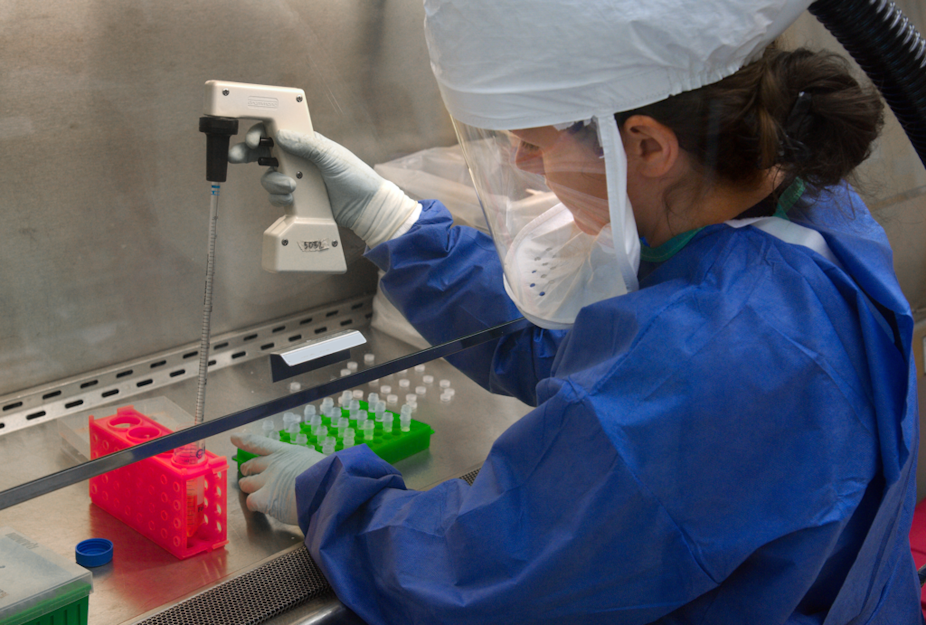The H7N9 virus is thought to have been transmitted between a 60-year-old man in China and his 32-year-old daughter, who cared for him. Experts said she had been previously healthy and, unlike her father, had no known exposure to live poultry before falling ill. Both were reportedly treated in intensive care but died of multiple organ failure.
The new H7N9 influenza virus emerged in China in spring 2013. In the first month, the virus infected more than 100 people and was lethal in a fifth of cases. By July, 134 cases and 43 deaths had been reported.
Chickens, pigeons and environmental samples taken from live poultry markets in the affected area tested positive, which suggested them as a source of infection. H7N9 had never before circulated in humans but all 7bn or so of us are fully susceptible to it. Until now, however, the virus didn’t transmit between humans because it hadn’t acquired the right adaptive mutations.
It’s a worrying development, but experts have said the virus’ ability to transmit itself is “limited and non-sustainable”.
Making a leap
Viruses are tiny microbiological entities that are not independently alive but rely on gaining access to a living cell for survival. They interact intimately with cellular machinery, subverting it for their own ends to amplify hundreds of copies of their viral genetic material and then use virally encoded protein shells called capsids to move their genomes onto the next host.
Viruses are usually specialists at infecting a particular type of cell inside a specific host, because they have co-evolved with that species and the viral proteins are a good fit with those of the host. Take influenza as an example; natural host species are wild aquatic birds.

Occasionally, an influenza virus passes from ducks to poultry, or to other domesticated animals such as pigs or horses, or even to humans. This is called zoonosis.
But if the zoonotic virus manages to undergo some replication, mutations that work better with the new host can adapt the virus to its new environment. This basic Darwinian evolution happens very quickly for viruses compared to larger organisms because viruses copy vast numbers of genomes and often replicate their genetic material without proof reading the results first.
Breaking through barriers
Research accumulated over a number of years has suggested at least two barriers that restrict avian influenza viruses in humans: the avian flu viruses bind poorly to human cells, and the virus would have to “switch” to do be able to go from human to human.
Viruses that caused influenza pandemics in 1957 and 1968 were able to make two mutations in order to switch. Interestingly, the current H7N9 viruses have one but not both of these changes. This may explain the ability of the virus to more frequently infect exposed humans than previous H7 avian viruses.
That the H7N9 virus doesn’t have two of these mutations may be why it still won’t efficiently transmit between humans, and likely why the Chinese researchers believe the virus that infected the father and daughter is “limited and non-sustainable”.
The second barrier avian influenza viruses must overcome to infect human cells is the poor performance of a virally encoded enzyme whose job it is to interact with the nucleus of the infected cell and direct the replication of the virus’ genome. However, it’s readily overcome if the genes that encode the enzyme mutate. One gene in particular, PB2, has already been shown to have mutated in humans but not birds.
Taken together, the H7N9 mutations place it one step closer to human-to-human transmission than the notorious H5 virus around since 2003.
Final piece of evolution?
In research into H5N1, in which artificial viruses were created and transmitted between ferrets, it was discovered that one other mutation in the HA protein enabled the virus to transmit through the air, by making it more resistant to heat or low pH.
It’s conceivable that this is the final piece of evolution required to achieve transmission in humans; a mutation that enhances survival so that the virus reaches the new host intact, despite the harsh environmental exposure it undergoes during the transmission process. And how readily H7 or any other emerging influenza virus can acquire this property may be what determines the next influenza pandemic.
This research may also reveal important clues about the likelihood that other emerging pathogens such as the new coronavirus could cause new epidemics. Work involving poliovirus, a completely different virus that enters through the mouth, has recently identified that stability of the virus particle is enhanced by interaction with bacteria in the gut and this is key to its onwards transmission.
In the end a virus can only continue to exist if it can pass from one host to the next. Emergence of new pandemics is largely driven by transmissibility and understanding this process is now, quite rightly, an intense area of research.

